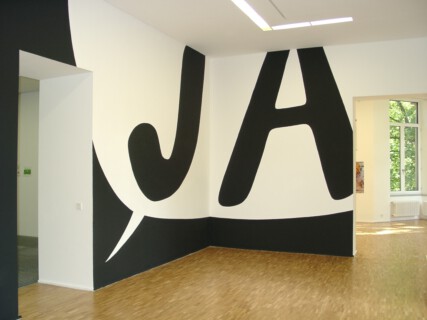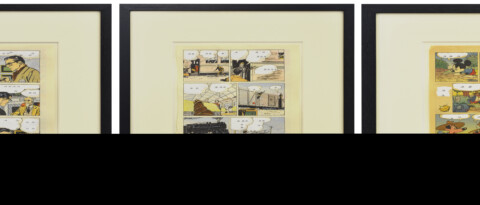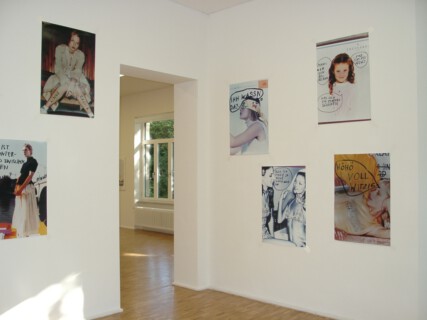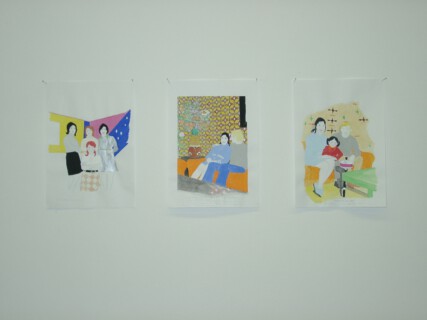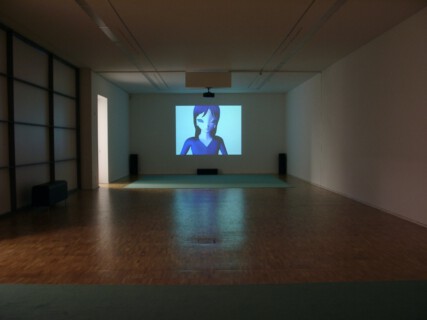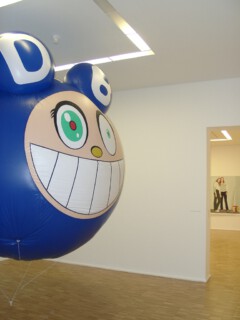In the context of the exhibition ›I love you too, but…‹, works by artists will be shown who, in different ways, use the instrument that is characteristic of the pictorial narrative of comics: the simultaneity of text and image, or who refer to the specific pictorial aesthetics of comics. The one-dimensional story in the entertainment medium of comics seems to be a starting point for the construction of artificial reality in many respects.
With Pop Art in the 1960s, along with other elements of popular culture, the aesthetics of comics entered the visual world of art for the first time. In the course of the computer-assisted medialisation of the 1990s, which encompassed almost all areas of life, classic elements of comics reappeared in the form of video and computer games. Here, as in the comics, an artificial world is generated pictorially. In this context, it is hardly surprising that the visual world and aesthetics of comics are once again increasingly the focus of interest for artists. It may seem almost nostalgic when artists adopt traditional narrative structures in the form of the dichotomy of image and text characteristic of the comic, of illustrative drawing and accompanying written content. In the process, the all-too-familiar visual imagery from the realm of mass consumption is used, not so much to postulate a dissolution of the boundaries between high and low once more, but rather as a nonchalant recourse to or appropriation of existing codes of media culture. In the context of the exhibition ›I love you too, but…‹, works by artists are shown who, in different ways, use the instrument that is characteristic of the pictorial narrative of comics: the simultaneity of text and image, or who refer to the specific pictorial aesthetics of comics. In many respects, the one-dimensional story in the entertainment medium of comics seems to be a starting point for the constructions of artificial reality. The latter, however, goes beyond mere narration to enable further fictions (Öztürk). In the rarest cases, the desire for narrative is in the foreground. Often moments of narrative are used to expose and question the artificiality of media constructions of reality, as they are used purposefully in comics, but also in other areas of media culture, such as advertising (Eder). Not infrequently, however, the narrative context is dissolved by breaking the unity of image and text, and multiple layers of meaning beyond this are opened up (Muntean/ Rosenblum). Often, however, there is also a critical questioning of the interdependence of text and image as an ultimately limited structural instrument (Westerwinter). In addition, works can be seen that are based on individual features of the visual imagery characteristic of comics and present these in isolated form without presenting them in a superficial narrative context (Sanguineti). In many cases, individual specifics of content, such as the trivial myth of the lonely comic hero, become the starting point for the creation of a character or an appearance (Murakami, Huyghe/Parreno).
